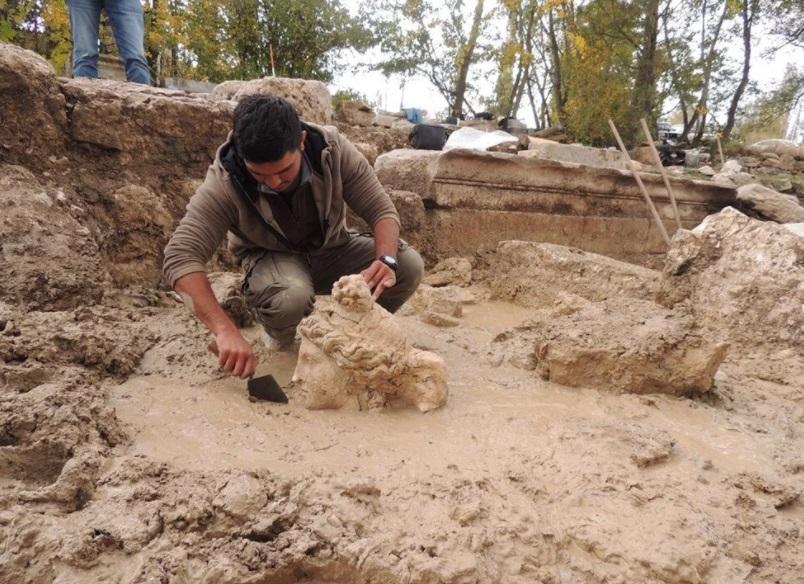
The statue heads of the mythological goddess of love and beauty called “Aphrodite” and the god of wine, “Dionysus,” were unearthed during the archaeological excavations that are ongoing in the ancient city of Aizanoi in the Çavdarhisar district of the western province of Kütahya.
Located 50 kilometers from the city center, the excavations in the ancient city, which was included in the UNESCO World Heritage Tentative List in 2012, are being carried out by the Kütahya Museum Directorate.
Speaking to the state-run Anadolu Agency, Gökhan Coşkun, the excavation coordinator and professor from Dumlupınar University Department of Archaeology, said that the excavation and restoration works were being carried out within the scope of the Penkalas Project.
“We continue excavations in the stream bed, known as ‘Penkalas’ in ancient times and ‘Kocaçay’ today. We know that there are five bridges over the river. Ancient writers report that one of them was a wooden bridge. The restoration of one of these bridges has been completed, while the other is in progress. The excavation of the other has begun,” he said.
Stating that they unearthed two important heads of statues during the excavation in the stream, Coşkun said: “These finds were a surprise for us during the excavations in the stream. They were the heads of large marble statues. One of them is the statue head of ‘Aphrodite,’ which is about 50 centimeters high and known as the goddess of love and beauty. The other is the 45-centimeter-high statue head of ‘Dionysus,’ known as the god of wine in mythology. In our previous works, we generally found the bodies of statues, and we could not find any heads. We were very happy to find these statue heads.”
Stating that the heads of the statues give information about the faith system in the Roman period, Coşkun said: “We know that the ancient Greek gods Aphrodite and Dionysus existed with different names in the Roman period as well. These are important findings for us as they show that the polytheistic culture of ancient Greece existed for a long time without losing its importance in the Roman period. The findings suggest that there may be a sculpture workshop in the region.”